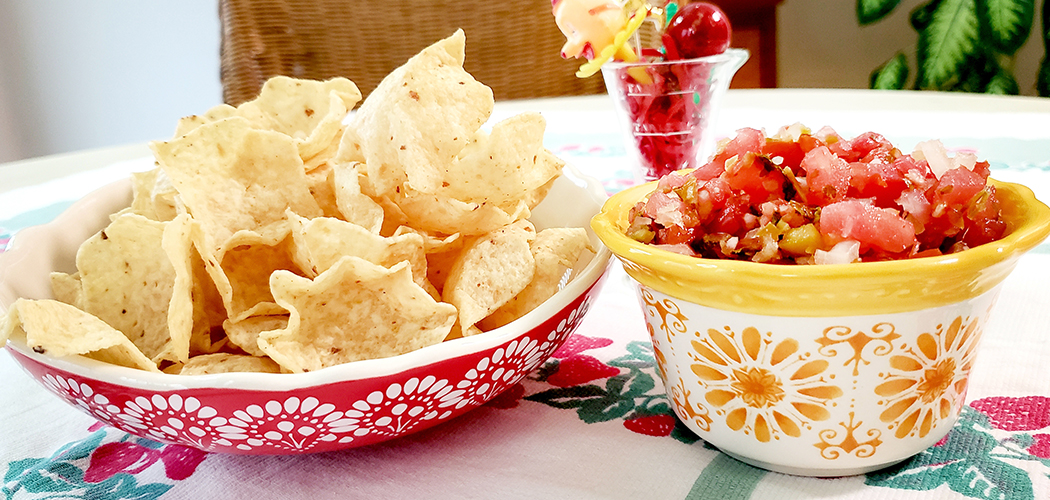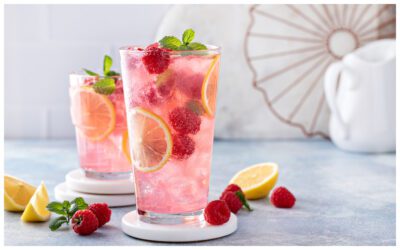[title subtitle=”words and images: Marla Cantrell”][/title]
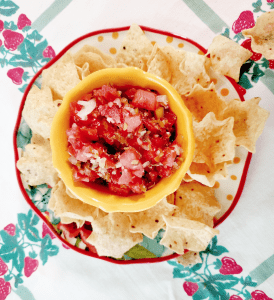 What’s as old as mankind and the newest artisanal craze? Trust me, it’s lactic-acid fermented food like sauerkraut, kefir, and kimchi. I had been hearing about the benefits for a while when I learned about a one-day class at Ozark Folkways in Winslow, Arkansas.
What’s as old as mankind and the newest artisanal craze? Trust me, it’s lactic-acid fermented food like sauerkraut, kefir, and kimchi. I had been hearing about the benefits for a while when I learned about a one-day class at Ozark Folkways in Winslow, Arkansas.
My teacher was Cat Swenson, owner of Great Ferments, and she is a zealot about fermenting, telling us the long history of the process which can be done using simple ingredients like filtered water, sea salt, and vegetables. (There are those who ferment all kinds of other things, I know, but for brevity, we’re sticking to veggies.)
Consider the pickle barrels in old general stores. Cucumbers were put in a barrel with unchlorinated water and salt and checked regularly to see if more saltwater was needed. When they achieved the right amount of sour flavor, they were sold.
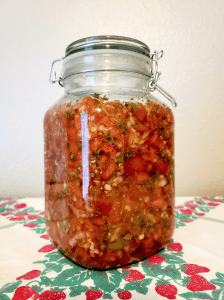 Over the years, most turned to the canning process of the modern era, which uses heat and vinegar to preserve food. It works really well and keeps food stable for a long time, but Cat says it also destroys a lot of the nutritional value.
Over the years, most turned to the canning process of the modern era, which uses heat and vinegar to preserve food. It works really well and keeps food stable for a long time, but Cat says it also destroys a lot of the nutritional value.
Lactic-acid fermentation works like this: Probiotic bacteria naturally present on raw vegetables creates lactic-acid during the fermenting process, creating complex flavors. According to Cat and other experts, the method also enhances vitamins, helps digestion, makes nutrients more readily available, and supports the immune system.
In Cat’s class, I made sauerkraut, an easy endeavor that required a head of chopped cabbage, sea salt without any additives, which served as the preservative, saltwater, a glass jar covered by a paper towel and rubber band, and three weeks of waiting. The process produces CO2 gas, which bubbled after a while, causing the brine to spill over the edge of the jar. This is normal, and it’s why you have to add brine as needed.
Cat told us she hoped we would try new recipes at home, and so I did. Once I’d succeeded at sauerkraut, I bought a book called Fermented Vegetables by Kirsten and Christopher Shockey, and joined a fermenters’ Facebook group.
I found this salsa recipe online at Yang’s Nourishing Kitchen. When I made the salsa, however, I adapted it slightly and used much smaller quantities since the original recipe makes such a large amount. I chopped the veggies, put them in a Fido jar (those are the glass jars with the hinged glass lids attached), and waited five days.
Cat said in class that fermenting is safer than canning pickles. She relies on her eyes and nose: the end product should look and smell good, no off-putting smells or slimy texture. For those she calls Nervous Nellies, her recommendation is to buy pH testing strips from a pool or home brewing company and make sure the finished product has a pH reading below 4.6. I didn’t do that, but I did ease into the salsa, eating only a tiny bite the first day, followed by a quarter teaspoon the next. When all was well, I ate some on chips, and then served it to my family who claimed it was the best salsa they’d ever had.
Want to try it? Let’s go over some basics.
Make Sure You:
Wash your hands! The consensus I’ve found says to stay away from anti-bacterial soap, which makes sense since you’re promoting good bacteria in your culture.
Clean all work surfaces, kitchen utensils and containers.
Use sea salt that doesn’t have any other ingredients such as caking agents.
Rinse vegetables in cool, filtered (unchlorinated) water.
Make sure the veggie pieces stay submerged beneath the liquid while fermenting.
Make sure temperature is between 55 and 75° during fermentation, and relatively constant.
Consider using pH test strips to ensure the pH level is below 4.6. If you opt not to, make sure you discard end product if it looks slimy or smells rotten.
Store the finished fermented product in the refrigerator.
Wild Fermented Salsa
Ingredients
Organic produce is best.
- 2 lbs. Tomatoes (Make sure they’re firm.)
- 1 Red Onion
- 1 Bell Pepper
- 2 Jalapeños
- 4 Garlic Cloves
- ¾ cup Cilantro
- ½ teaspoon Ground Cumin
- 2 Tablespoons Finely-Grained, Additive-Free Sea Salt
(I used Redmond’s Sea Salt. I would advise against reducing the amount since salt is the key to the culture that preserves this dish.) - Coffee Filter or Paper Towel and Rubber Band if using canning jars
- Glass Canning Jars and Lids or Glass Fido Jar(s)
- Optional but Recommended: pH strips sold at brewing supply or pool companies or online
Method:
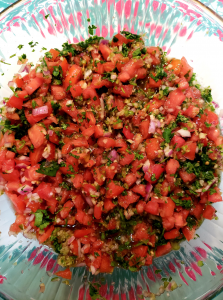 Chop tomatoes, saving the juice that results from chopping. Dice onion. Dice bell pepper and jalapeños and remove seeds. Dice garlic. Now, pulse the bell pepper, jalapeños, garlic and half the onion in a food processor, adding the tomato juice you saved, until the ingredients are blended but you can still see small chunks of veggies. In a large bowl, combine the mixture from the food processor to the cilantro, tomatoes, remainder of onion, sea salt, and cumin.
Chop tomatoes, saving the juice that results from chopping. Dice onion. Dice bell pepper and jalapeños and remove seeds. Dice garlic. Now, pulse the bell pepper, jalapeños, garlic and half the onion in a food processor, adding the tomato juice you saved, until the ingredients are blended but you can still see small chunks of veggies. In a large bowl, combine the mixture from the food processor to the cilantro, tomatoes, remainder of onion, sea salt, and cumin.
Fill your jar(s) with the salsa, leaving an inch of space at the top. I used a 50-ounce Fido jar with a hinged lid that I purchased at Walmart, since the hinged lid will allow the CO2 gas to escape around the seal. If you’re not using a Fido-type jar, cover the opening with a coffee filter or paper towel and secure with rubber band.
Use the back of a spoon to push down the veggies, making sure they’re covered by the juice. The pieces must stay submerged during this process.
Put the container(s) on a plate in a dark place such as a closet for 3-5 days, and cover with a kitchen towel to ensure constant darkness. I waited 5 days because I like tangy salsa. Each day, I used the back of a spoon to push the salsa down and help release any trapped air. On the third day, I could see some bubbling through the sides of the glass jar, which is a sign the fermentation is working. When the 5 days were up, I stored the salsa in the refrigerator. Can be kept for 4 months. I’ve made 2 batches since June, so I haven’t stored mine for too long.
Want to enjoy fermented foods without making them yourself? Olde Fashioned Foods in Fort Smith carries Cat’s Great Ferments products (try her pickles!), as well as products for fermenting.

